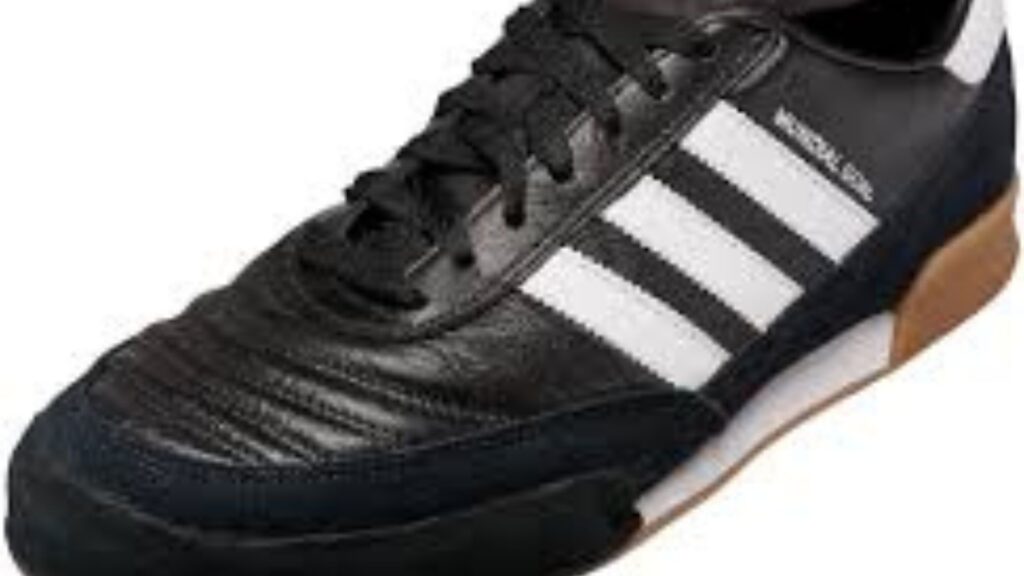
Indoor soccer is a fast-paced and dynamic sport, demanding precise control, speed, and comfort from players. While the right skills and technique are essential, the importance of wearing proper footwear cannot be overstated. Indoor soccer shoes are specifically designed to provide the best support, traction, and comfort during indoor games, helping players achieve their best performance.
In this article, we will explore everything you need to know about indoor soccer shoes—from understanding their features and benefits to how to choose the right pair. We’ll also address some common questions to ensure you make an informed decision when shopping for indoor soccer shoes.
Table of Contents
What Are Indoor Soccer Shoes?
Indoor soccer shoes are specially crafted footwear designed for playing soccer on hard, flat indoor surfaces such as gym floors or indoor arenas. Unlike traditional outdoor soccer cleats, which have studs or spikes to provide traction on grass or turf, indoor soccer shoes feature flat, smooth soles made of rubber or other non-marking materials to prevent damage to indoor surfaces.
These shoes are designed to offer superior grip, agility, and comfort to players, enabling them to perform quick turns, rapid sprints, and precise ball control on indoor courts. Indoor soccer shoes also focus on lightweight construction, flexibility, and breathability to ensure that players can stay comfortable and agile throughout the game.
Features to Look for in Indoor Soccer Shoes
When choosing indoor soccer shoes, it’s essential to consider a few key features that make them suitable for indoor play. These features include:
1. Non-Marking Rubber Soles
The soles of indoor soccer shoes are typically made from non-marking rubber, which provides the necessary grip on smooth indoor surfaces without leaving scuff marks. This type of sole is ideal for maintaining control over quick movements, preventing slipping, and ensuring a secure footing during fast-paced play.
2. Low Profile and Lightweight Construction
Indoor soccer requires fast movements, quick pivots, and sudden bursts of speed. As a result, indoor soccer shoes are designed to be lightweight and have a low profile, ensuring that players can move quickly and change direction without being weighed down. The shoes’ construction also focuses on flexibility, allowing for better responsiveness and agility.
3. Comfort and Cushioning
Comfort is a top priority when it comes to indoor soccer shoes. Since indoor soccer games can last for an extended period, players need shoes that provide adequate support and cushioning. Many indoor soccer shoes feature padded insoles or EVA foam cushioning to absorb shock and reduce the impact on the feet during quick movements and jumping.
4. Breathability
Indoor soccer can be intense, and it’s important to keep your feet cool and dry throughout the game. Indoor soccer shoes are often constructed with breathable mesh uppers or perforated materials that allow air circulation, preventing excessive sweating and helping to maintain comfort during long sessions.
5. Durability
Although indoor surfaces are generally less abrasive than outdoor fields, the fast movements involved in indoor soccer can cause wear and tear on shoes. Look for indoor soccer shoes that are made with durable materials, such as synthetic leather or high-quality mesh, to ensure they last longer even with frequent use.
6. Ball Control and Touch
A key aspect of indoor soccer is the ability to maintain close control over the ball. The upper part of indoor soccer shoes is typically made of synthetic leather or textile materials that provide a tight, comfortable fit and allow players to control the ball more precisely. Some shoes are even designed with textured surfaces to enhance grip on the ball for better passing, shooting, and dribbling.
Types of Indoor Soccer Shoes
While all indoor soccer shoes are designed for play on hard surfaces, they come in a variety of styles that cater to different player preferences. Here are some of the most common types:
1. Flat-Soled Shoes
Flat-soled shoes are the most common type of indoor soccer shoes. These shoes feature a smooth, non-marking rubber sole that offers excellent traction on indoor courts. Flat-soled shoes are lightweight and provide optimal stability and agility for players, making them a great choice for all types of indoor soccer players.
2. Turf Shoes
Turf shoes, while typically designed for outdoor use on artificial turf, can also be suitable for indoor soccer. These shoes have a slightly more textured sole with small, raised studs or nubs. While they’re not as common as flat-soled shoes for indoor play, they may be preferred by some players who want additional grip and traction, especially on slick surfaces.
3. Futsal Shoes
Futsal is a variant of indoor soccer played on hard courts, and the shoes used for futsal are specifically designed to provide maximum ball control, comfort, and durability. Futsal shoes tend to have a low-profile design, non-marking soles, and a focus on control, making them ideal for this fast-paced, skill-oriented sport.
4. Running Shoes for Indoor Soccer
Some players may choose to use lightweight running shoes for indoor soccer, especially if they are not looking for the high level of control that soccer-specific shoes offer. Running shoes can provide good cushioning and comfort, but they may not offer the best traction or support for indoor soccer movements. If you are playing indoor soccer occasionally or for casual fun, this option might work, but soccer-specific shoes are usually recommended for serious play.
How to Choose the Right Pair of Indoor Soccer Shoes
Selecting the right pair of indoor soccer shoes depends on several factors, including your playing style, comfort preferences, and the type of indoor surface you play on. Here are some tips to help you make the right choice:
1. Consider Your Playing Style
If you are a player who focuses on speed and agility, you may want to look for shoes that offer lightweight construction and excellent grip. On the other hand, if you are a more technical player who values ball control and touch, choose shoes with a soft, supportive upper that enhances your ability to control the ball.
2. Fit and Comfort
The fit of your indoor soccer shoes is crucial for both comfort and performance. Make sure the shoes are snug but not too tight, providing a secure fit that prevents slipping. A well-fitted shoe will help prevent blisters and improve overall comfort. Consider trying on different brands and models to find the pair that fits your foot shape best.
3. Quality of Materials
Look for shoes made from durable and breathable materials. Synthetic leather or mesh uppers are often used for their balance of durability, comfort, and breathability. The soles should also be made of high-quality rubber to provide excellent traction and prevent slipping on smooth surfaces.
4. Durability and Budget
Indoor soccer shoes come in a wide range of price points. While it can be tempting to go for a budget-friendly option, investing in a high-quality pair of shoes will ensure greater durability and better performance. Consider your playing frequency and choose shoes that will provide both value and longevity.
FAQs About Indoor Soccer Shoes
1. What is the difference between indoor soccer shoes and outdoor soccer cleats?
Indoor soccer shoes have flat, smooth soles made from rubber, ideal for hard indoor surfaces, whereas outdoor soccer cleats feature studs designed to provide traction on grass or turf. Indoor soccer shoes are made for indoor play and offer grip without damaging surfaces, whereas cleats are designed for outdoor conditions.
2. Can I wear indoor soccer shoes for outdoor soccer?
While indoor soccer shoes are designed for indoor play, you can wear them on outdoor surfaces that are firm and flat. However, they may not provide enough grip or protection for playing on grass or artificial turf, and they could wear out more quickly if used outdoors.
3. How do I clean my indoor soccer shoes?
To clean indoor soccer shoes, use a soft brush or cloth to remove dirt and debris from the surface. For deeper cleaning, you can wipe the shoes with a damp cloth and mild soap. Make sure to let them air dry completely before wearing them again.
4. Do indoor soccer shoes come in different sizes?
Yes, indoor soccer shoes come in a variety of sizes, including different width options. Be sure to check the sizing guide of the specific brand you’re purchasing from to ensure you get the best fit for your feet.
5. Can I wear indoor soccer shoes for futsal?
Yes, indoor soccer shoes are generally suitable for futsal, as they are designed for indoor play. Futsal-specific shoes often offer added ball control features, but standard indoor soccer shoes can also work well for the sport.



